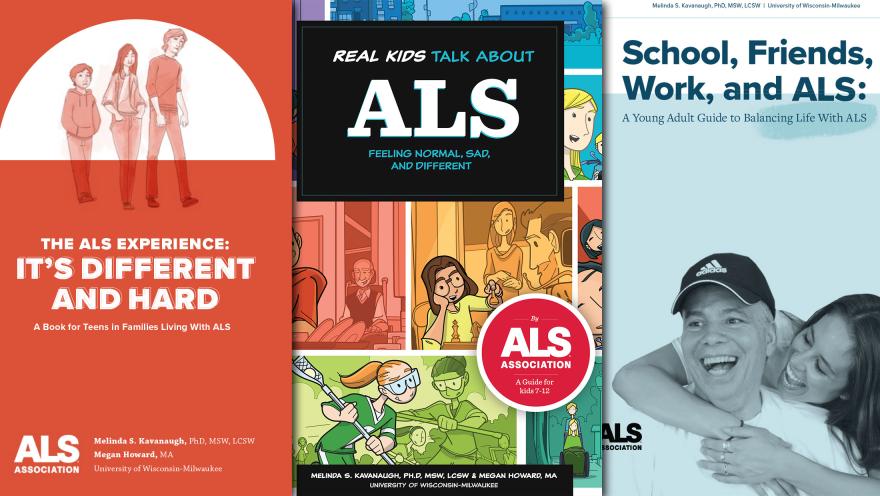
LUKi & the Lights
LUKi is a joyful robot living his best life when he starts to notice signs that parts of his body are malfunctioning. After a visit to the doctor, LUKi is diagnosed with ALS/MND. Amidst his heart-wrenching challenge, he courageously confronts ALS/MND on his own terms with the support of his friends.
LUKi & the Lights was created by our partners, Global Neuro YCare (GNYC), Big Grin Productions, and Anjo Snijders & Sascha Groen who wrote the story. This film is designed to support families, caregivers, and children of loved ones living with ALS/MND. LUKi & the Lights is completed with no dialogue, only sound, to ensure families could view it worldwide.
Click here to watch the film and access materials created by Global Neuro YCare to support discussion between families, caregivers, professionals, and children after viewing the film.
Youth Education Books
Based on subject matter-specific research, three youth education books were developed for children, teens, and young adults. These books follow the same structure as the family guide (i.e. addressing what is ALS, caregiving, family and friends, and end of life). Yet, each book is presented to target the developmental stage of the youth. These books are available in print and digital form.
The following guides were developed to support parents and school professionals who have a child impacted by ALS.
Real Kids Talk About ALS: Feeling Normal, Sad, and Different
Graphic novel for youth, ages 7-12. Delivered in a graphic novel format, this book uses direct quotes from youth in the ALS research projects. These quotes help situate the learning style and experiences of children in ALS.
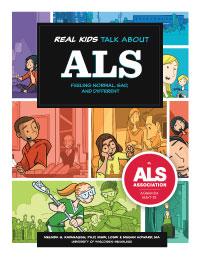
The ALS Experience: It’s Different and Hard
Choose your own adventure guide, middle school youth, ages 13-18. This book follows the stories of three youth, providing options for how they talked to people, who they talked to, and what was the outcome. The book allows other youth to choose who they might want to talk about ALS and their experiences. A companion online version has been developed.
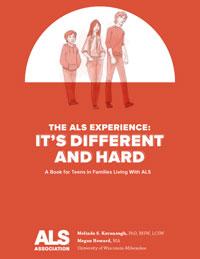
School, Friends, Work, and ALS: A Young Adult Guide to Balancing Life with ALS
Older youth/young adult guide, ages 19-25. This book takes a more serious tone, again following several young adults as they manage their own lives with the care needed for their loved one with ALS, school and relationships. It is minimally illustrated and again uses actual stories and quotes.
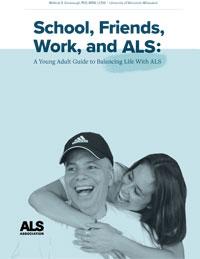
Other Resources
Families and ALS: A Guide for Talking with and Supporting Children and Youths
This resource guide was created primarily for families living with ALS, including parents, grandparents, siblings, and other family members. The goal of this guide is to help families start answering many of the questions that will be asked, as well as to offer support and suggestions for professionals assisting with families affected by ALS. A key theme throughout this guide is communication — how to do it, maintain it, and include it in everyday life.

At School: A Guide to Supporting Students Who Have Been Affected by ALS
While much attention is paid to the person living with ALS and their adult family member/caregivers, children are often voiceless, despite experiencing much of the same shock, sadness, caregiving, and grief as adults. Over the years, Dr. Kavanaugh has met with school personnel asking for guidance, manuals, and education on how to talk about and support children and adolescents living with and caring for a person living with ALS. These professionals recognized the limited information and the need to receive guidance in order to lessen the potential social isolation felt by kids in families with ALS — particularly in terms of how these issues affect school performance and attendance. This guide was created to address the needs of school staff and personnel working with children impacted by ALS.
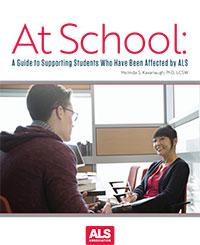
Talking about ALS Across Age Groups
This table offers starting points to think about how to talk to and engage children across different ages. While there is no “right” way, understanding how to approach the conversation by age group can be extremely useful.
Talking About Death and Dying Across Age Groups
This table addresses the different ways children process and understand death and dying and offers suggestions for ways to engage at each age level.
Order Printed Resources
The ALS Association provides a variety of printed materials free of charge to help deal with the impact of ALS.
